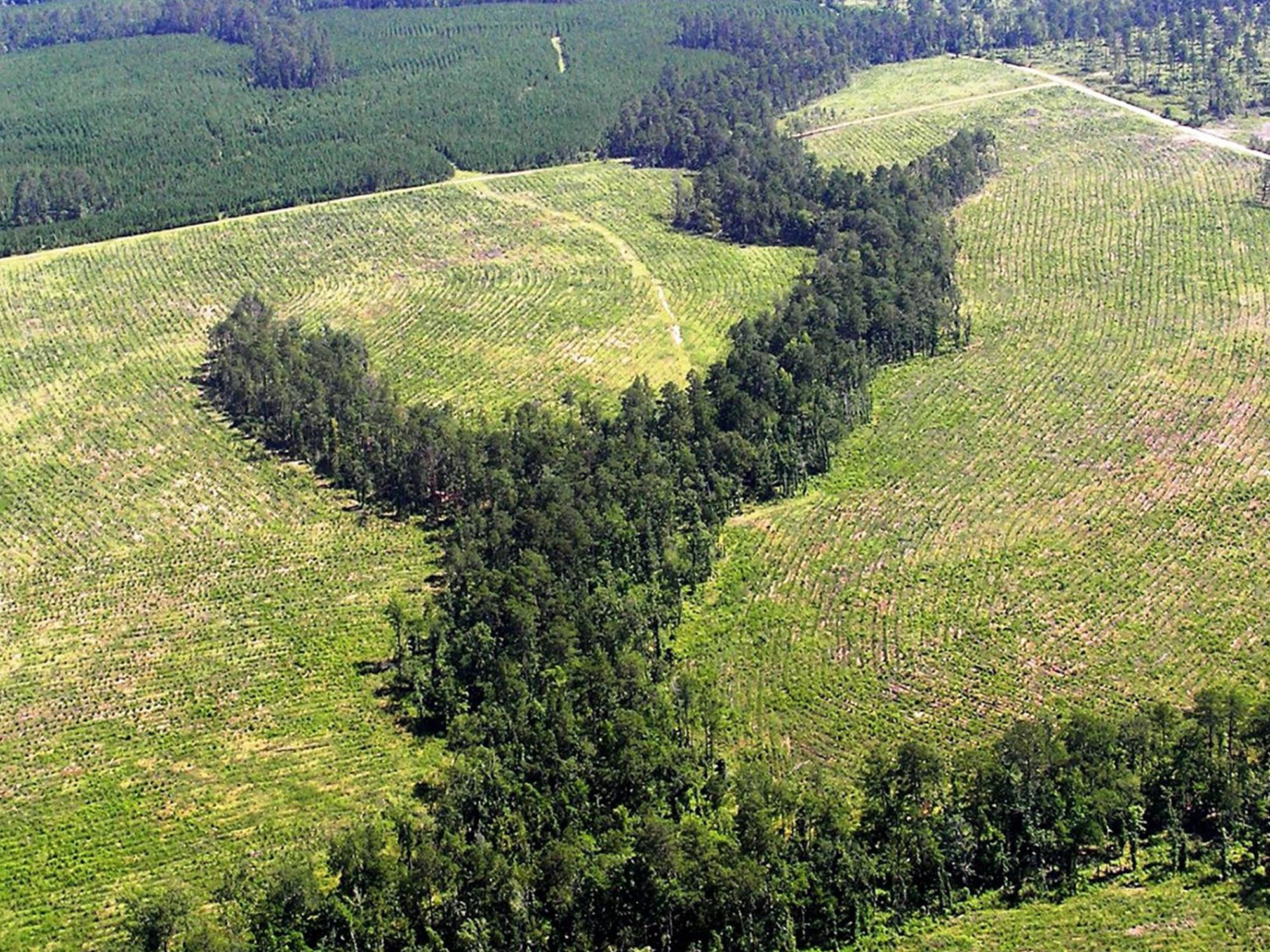Information Possibly Outdated
The information presented on this page was originally released on December 21, 2018. It may not be outdated, but please search our site for more current information. If you plan to quote or reference this information in a publication, please check with the Extension specialist or author before proceeding.
Streamside zones protect groundwater
STARKVILLE, Miss. -- Streamside management zones have become critical tools forestry landowners and professionals use for protecting water quality during and after timber harvests.
These zones are relatively undisturbed areas adjacent to perennial and intermittent streams that act as filter strips for water flowing overland after it rains. Most of the pollution that results from logging and other forestry activities is in the form of sedimentation of streams. In other words, soil is carried from the harvesting site and deposited in the stream channel by runoff.
Well maintained zones preserve the ground cover and some trees for a predetermined width along the stream channel. Vegetation on the ground effectively slows the water and allows the suspended soil to settle out before it reaches the stream. Trees left along the stream provide shade to maintain the normal temperature of the water.
The width of the streamside management zone is determined by the slope adjacent to the stream; the steeper the ground, the wider the zone. The slope percentage is determined by the amount of rise divided by the length of the run times 100. The Mississippi Forestry Commission’s “Best Management Practices for Forestry in Mississippi,” recommends the following widths and slope combinations:
Slopes from 0 to 5 percent need zones that are 30 feet wide.
Slopes from 5 to 20 percent need zones that are 40 feet wide.
Slopes from 21 to 40 percent need zones that are 50 feet wide.
Slopes that are over 40 percent need zones that are 60 feet wide.
Harvesting trees in a management zone is perfectly alright. However, you should remove only half of the trees. Leaving 50 percent of the crown cover will give adequate shade to the stream, which allows you to remove the most valuable trees along the zone while maintaining its effectiveness.
Water quality concerns are the driving force behind streamside management zones, but they offer other benefits as well. The zones improve the aesthetics of a timber harvest and provide excellent wildlife corridors. Forest landowners want more than just timber income from their property, and using best management practices will protect water quality, enhance recreational opportunities and improve wildlife potential.
For more information on streamside management zones and best management practices, contact your county Extension office.

Editor’s Note: Extension Outdoors is a column authored by several different experts in the Mississippi State University Extension Service.





